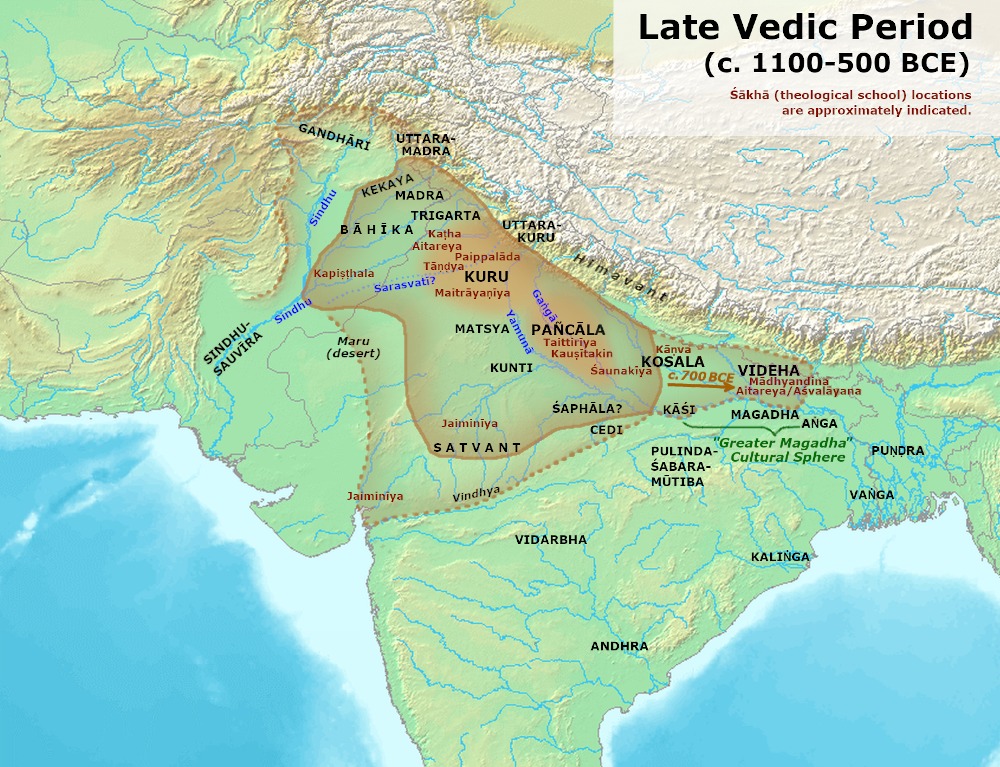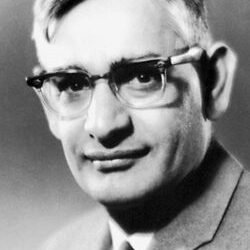Introduction
The Later Vedic Period (c. 1000–600 BCE) marks a decisive transition from clan‑based, cattle‑rich polities of the northwest to agrarian, iron‑aided societies across the upper Gangetic basin, where janapadas, coronation rituals, and tax‑like levies anchored an increasingly monarchic order.
Eastward shift and material horizon
Vedic communities expanded from Punjab–Kurukshetra into the Ganga–Yamuna doab and beyond to Kosala and Videha, a movement mirrored in Painted Grey Ware (PGW) sites and early iron (krishna/śyama ayas) finds at nodes such as Hastinapura and Kausambi; PGW bowls and dishes typify this iron‑phase ceramic horizon.

Polity: from jana to janapada–rashtra
Territorial kingship: The jana’s settlement domain is now styled janapada, and texts use rashtra for realm, while the rajan transforms into a protector of territory with hereditary succession largely entrenched.
Ritual sovereignty: Rajasuya, Vajapeya, and Ashvamedha sacralize kingship and hierarchies, with Brahmanas legitimating rule through elaborate sacrificial expertise.
Fiscalization: Earlier presents harden into levies—bali (general impost), bhaga (share of produce), and shulka (tolls/customs)—collected by officials like the sangrahitri, signaling routine revenue extraction.
Assemblies and offices: Sabha eclipses samiti and narrows socially; village bodies and royal officials (adhyakshas, judges) handle justice and administration as popular checks recede.
Economy: iron, fields, and surplus
Iron toolkit: Socketed axes, iron‑tipped ploughshares, and hoes facilitate forest clearance and intensify cultivation, pushing a mixed economy toward surplus agriculture.
Crops and double‑cropping: Barley remains, but rice (vrihi, tandula, shali) and wheat (godhuma) gain prominence, with evidence for double cropping and diversification into pulses, millets, and sugarcane.
Production and exchange: Craft ranges widen—smiths, carpenters, weavers, potters—as PGW, black‑slipped, red, and black‑and‑red wares circulate; units like nishka, satamana, and krishnala serve as value standards amid barter and tribute.
Society: stratification and household
Varna consolidation: Varna ranks harden into a birth‑based order—Brahmana and Kshatriya precedence, Vaishya as tribute‑payer/producer, Shudra under social disabilities—though pockets of mobility persist (e.g., ritual privileges to rathakara in select contexts).
Patriarchy and ashramas: The patriarchal household expands; the four ashramas ideal (student, householder, forest‑dweller, renunciant) takes shape in late textual strata as a normative life‑course.
Settlement texture: Houses in mud, brick, or wattle‑and‑daub reflect sedentism; toward the close, “nagara” appears and sites like Hastinapura and Kausambi display proto‑urban traits.
Religion: sacrifice, gods, and interiorization
Ritual centrality: Public and domestic sacrifices dominate religious life; large offerings (including cattle) and dana reinforce sacerdotal power and royal prestige.
Pantheon shifts: Indra–Agni prominence ebbs relative to creators/preservers (Prajapati, Vishnu) and Rudra; occupational groups identify tutelary deities, indicating social‑religious differentiation.
Philosophical turn: Alongside Brahmana ritualism, the Aranyakas and Upanishads emerge, interiorizing inquiry into Atman–Brahman and sowing seeds for sramanic critiques that will bloom after 600 BCE.
Administration and justice
Kingship professionalizes: coronations, spies, village judges (gramyavadins), royal courts, and delegated adhyakshas structure governance; military mobilization still musters tribal units during war rather than a permanent standing army.
Trade, mobility, and horizons
Mentions of seas and voyages imply widening itineraries; merchants (vanik/vanija) connect craft and surplus to markets, while ox‑carts, chariots, elephants, and riverine boats knit the janapadas into an exchange field reaching toward later mahajanapadas.
Kuru–Panchala to the Gangetic crucible
Kuru and Panchala dominance frames the mid‑phase (Parikshit, Janamejaya traditions), later giving way to Kosala, Kasi, and Videha, as eastern plains consolidate; the Kuru–Panchala belt remains the cultural workshop where ritual kingship, PGW horizons, and iron agriculture coalesce.
Why it matters
State formation: The Later Vedic age forges the institutional grammar—territorial kingship, ritual sovereignty, revenue, and bureaucracy—that the mahajanapadas will scale.
Social order: It codifies varna and patriarchal household norms even as philosophical texts open pathways beyond sacrificial orthodoxy.
Agrarian base: Iron‑enabled clearance and rice agriculture underpin demographic growth, craft specialization, and early urban tendencies in the doab.
Quick anchors
Time/span: c. 1000–600 BCE; PGW iron‑phase in the doab.
Key terms: Janapada, Rashtra, Bali/Bhaga/Shulka, Rajasuya/Vajapeya/Ashvamedha.
Sites/regions: Hastinapura, Kausambi; Kuru–Panchala core; east to Kosala–Videha.
Conclusion
The Later Vedic Period recasts Vedic society for a new geography and technology: iron clears the forests, rice fills the granaries, rituals enthrone kings, and levies regularize rule. From these building blocks—territory, tax, and text—arise the janapadas and, soon after, the great states of northern India.





